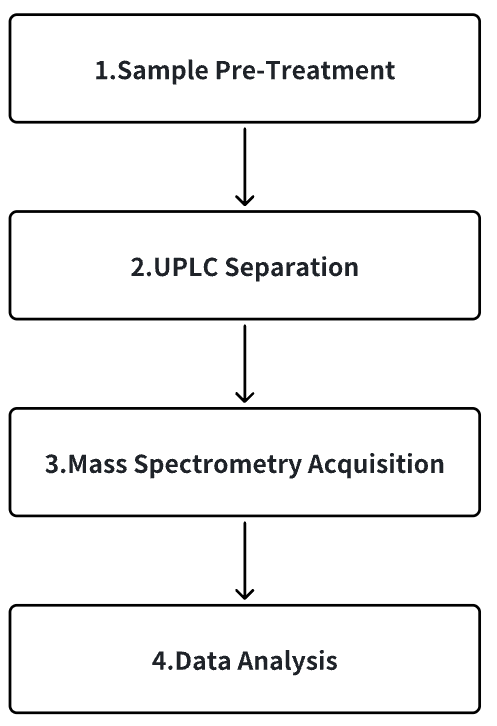High-Resolution LC-MS Molecular Weight Identification Service
Molecular weight, as a key characteristic parameter of proteins, is crucial for identifying specific proteins and conducting subsequent protein research activities. Therefore, accurately and effectively determining the molecular weight of proteins is particularly important. Currently, the common methods for identifying molecular weight include gel electrophoresis, MALDI-TOF, LC-MS, SEC-MALS, etc. Compared with other methods, LC-MS has the advantages of high sensitivity, high accuracy, high resolution and short detection time.
MtoZ Biolabs offers high-resolution LC-MS molecular weight identification services, which can accurately determine the molecular weight of protein samples with the accuracy of 5ppm, and can also detect the original molecular weight, reduction, deglycosylation molecular weight of antibodies, as well as antibody-drug conjugates. It is also possible to analyze the modification state of proteins (such as phosphorylation, small molecule drug binding, etc.), and make a relative quantitative analysis of these modifications.
Under the action of electric field, the sample solution forms mist droplets with high charges, which are ionized in the process of moving to the mass analyzer, and finally ions with single charge or multiple charges are obtained. The final protein molecular weight is obtained by deconvolution calculation of the obtained ions with different charges.
Analysis Workflow
1. Sample Pre-Treatment, Such as Replacement of Buffer System, Reduction, Deglycosylation, Incubation of Small Molecular Drugs, etc.
2. Centrifugation and Analysis
3. Data Processing
4. Compilation of Results and Report Generation

Figure 1. Working Process
Service Advantages
1. Less Sample Consumption
2. High Sensitivity, High Resolution and High Accuracy
3. Capable of Detecting Mixed Protein

Figure 2. Single Protein Deconvolution Molecular Weight
The horizontal axis represents molecular weight, and the vertical axis represents signal intensity.

Figure 3. Protein Binding to Small Molecules
Before Binding (Left) and After Binding (Right)
The horizontal axis represents molecular weight, and the vertical axis represents signal intensity.
Sample Submission Requirements
1. Try to keep the buffer ingredients as simple as possible, such as water, PBS, ammonium bicarbonate solution. Try not to contain high salt, SDS and other detergents. If it does, more than 2 times the amount is required for pre-treatment.
2. Concentration greater than 1 μg/μL.
3. Sample types: antibodies, proteins, peptides, protein/peptide and small molecule conjugates.
Services at MtoZ Biolabs
1. UV Absorption Chromatography, Mass Spectrometry, Deconvolution Molecular Weight Map, Molecular Weight Abundance and Proportion
Applications
1. Protein/Peptide Molecular Weight
2. Antibody-Drug Conjugates
3.Small Molecule Drug Binding to Target Protein
4. Protein/Peptide and Small Molecule Conjugates
FAQ
Q1: What are the advantages and limitations of high-resolution mass spectrometry for molecular weight determination?
(1) Advantages: It has high sensitivity, resolution and accuracy, requires less samples, can detect the accurate molecular weight of protein, and can analyze complex mixed samples.
(2) Limitations: The detection effect is poor for samples containing large amounts of glycosylation and modifications.
Q2: Why does high-resolution mass spectrometry only detect the molecular weight of the monomer but not the molecular weight of the non-covalent dimer?
The conventional detection method will break the non-covalent dimer into the monomer, and the molecular weight of the non-covalent dimer needs to be detected by native ms.
How to order?







